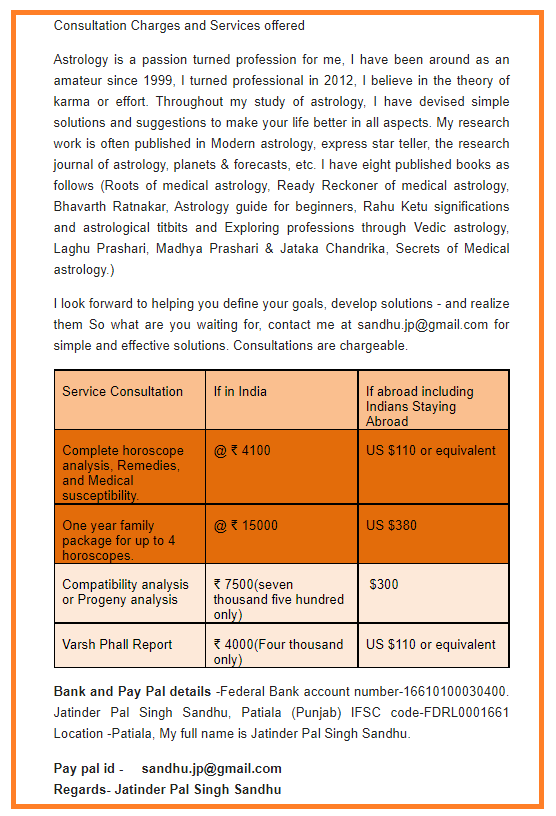Mantra, Tantra and Yantra have since time immemorial been prescribed to awaken the self within and as remedial measures to burn off negative karmas. These are windows to cosmic wisdom and recitation of mantras awakens self-awareness and internal consciousness which are key to self realisation and divinity. Mantras like Gayatri, om namah sivay, maha mritunjaya and others are a part of our daily life. Though we all know some mantra or the other, very few people know and understand the significance and nuances of it.
What is mantra?
Technically speaking a mantra is a mystical formula composed of letters and words that are meaningful to the initiated. A mantra is a combination of sacred syllables which forms a nucleus of spiritual energy. The mantra is also a collection of “akshara” (syllables) meant to raise the kundalinin shakti ( the coiled power that lies dormant in all of us). This serves as a magnet to attract or a lens to focus spiritual vibrations. According to upanishads, ancient scriptures of India, the original abode of the mantra was the primeval ether. The mantras were directly perceived by the rishis or seers who translated them into an audible pattern of words, rhythm and melody.
The chanting or reciting of mantras activates and accelerates the creative spiritual force, promoting harmony in all parts of human beings. The repetition of mantras over billions of times by countless devotees over the centuries has brought about a vast reservoir of power which augments the inherent spiritual potency of the mantras.
There are at least seventy million mantras in the hindu texts. These are classified as two types :
Pra-siddha Mantra – or those that can be recited by any person irrespective of whether they are given by a guru or not and without a specific objective of solving a problem.
Kamya-siddha Mantra – which are meant to solve specific problems.
Science of Mantra:
John Woodrof, a retired judge of Madras High Court experienced this. One proficient tantrik astonished him by producing fire in wood with the help of fire mantra (hreem). Various parts of the body are also affected by the sounds of the words. B M Lesario Vasai, an Australian scientist wrote in one magazine about his own experience and that of a sick child. He wrote in detail that by reciting certain types of words there was an improvement in their health. It is also well-known to us that there is an effect produced by the energy created by reciting mantras individually or in group; we get a thrill (sensation) in our body whenever we recite the gayatri mantra in a group, or while praising goddess Durga, even though we do not understand the significance of these mantras. This is the power of word energy.
Principal Karmarta of Occult Research College in Pune said in his discourse that the letters of the alphabet are not only informal but they also have close relation with mantra energy. Each letter of the alphabet according to its pronunciation makes a specific effect on the human body and mind. He proved this by making some experiments out of some letters; he proved that the temperature of the body increased by 1 degree by putting specific stress on the letters in “Ram”, reciting it 1000 times. It can be proved by all this that the word is not lifeless; there is life in its energy and rays, this is the science of mantra.
Spoken words get destroyed after making a certain sudden effect. Its energy gets destroyed, but the energy of mantras remains for a long time. The method of uttering a mantra is very important. Mantra has got some rhythm and it has two types of meaning – word meaning and word significance. It is not necessary that every word has some meaning , but it has its significance and that is a fact.
Suitability of a mantra:
Who should chant which mantra? The suitability of a mantra should be judged before giving it, else the consequences can be negative or disastrous depending on the extent of unsuitability. {This is tested based on the name [names were based on Janma Rashi (Moon sign at birth) and Nama Rashi (sign having the name letter.)] and the varna (profession) of the sadhaka and this is done in a few stages.} Firstly, the starting letter of the mantra is checked .This is followed by a check on the total number of letters of the mantra. The third step is to check the overall impact of all the letters of the mantra. However some mantras are exempt from this rule. (The list is given below.)
Sex of Mantra:
The mantra can also be classified on the basis of the ending words that have an impact on the attitude of the practitioner. Masculine mantras can be identified by their ending syllable / words like “Vasat” or “fhut”. These have the strength to ward off evil and are generally aggressive. Femininie mantra (stri) on the other hand is docile and generally ends with “swaha” or “vaushat” etc. They require the practitioner to be dedicated and make offerings to the deity. Neuter mantra has words like “namah”, “hum” etc which require the practitioner to submit to the will of the deity. The choice of a mantra does not depend on the sex of the person. The choice will depend on the attitude that one wishes to invoke the deity with.
In general, captivation (vasikaran), aversion (ucchatan) and other aggressive acts are best done with the aid of masculine mantras, while for the destruction of diseases and general welfare the feminine mantras are preferred. Neuter mantras can remove black magic and are very protective.
Types of Mantras:
Mantras are used for several purposes, for material gains and for spiritual upliftment. The most exalted aim can be spiritual upliftment, others include curing of disease, warding off evil, attaining liberation, gaining wealth, influencing others, acquiring powers, and at the lowest and meanest level, harming others.
Shanti karan – (pacification) It is meant for the destruction of diseases, general well-being and emancipation from the cycle of re-birth. These mantras are for warding off the malefic effects and influence of planets and for curing of diseases.
Vashi karan – (captivation) These mantras, when used in a specific way, are to bring people under control, and thus one gains one’s desires.
Sthamban – (immobilisation) These mantras deal with all the persons to stop acting against you. It is meant for mentally or physically obstructing a person or group.
Videshan – (dissension) These mantras are for creating differences between people. They are meant for creating differences between couples or close friends and allies.
Uchchattan – (aversion) It is meant for making a person hate another person or place. These mantras deal with the distraction of the mind of enemies, opponents and other persons so that they stay away from harming you. This can also be used for persons working against their country, birthplace, residence, home and family members.
Maran – (eradication ) It is meant for causing the death of a person (or enemy). These are death-inflicting mantras through which anybody can be killed.
Warning: These are some of the traditional uses. However, it is a law of nature that each and every action has a reaction, so anything done with a wrong intent will bounce back on the user. Any evil intention or act will backfire on the user only.
Mantra sadhana:
The essential and important parts of the process are:
1. Recitation of the mantra
2. Correct rhythmic pronunciation of the mantra
3. Understanding the meaning of the mantra
4. Reciting the mantra the prescribed number of times
Rules of Mantra:
Mantra should be pronounced properly. If it is not pronounced properly, its significance is likely to be changed. This shows that pronounciation should be done properly otherwise the meaning gets changed.
Where the mantra should be broken is important, the meanigng gets changed according to the place where we break the mantra. That is why we should not pronounce the mantra if we do not know how to do it. If a mantra is not properly used, it can have an adverse effect. There is a rhythm for pronouncing the mantra and the seat is specific, the sitting posture is definite.
The smaller the mantra, the more effective it is. If it is long, it becomes difficult to utter and its result is general. If it is small, it is easy to utter and its result is very good. The result of mantra is of three types:
(a) Mantra produces vibrations
(b) Colour is seen because of mantra
(c) Different types of sounds are heard
Some universal mantras which anybody can chant are:
1. Om Namo Narayanaya
2. Om Namah Shivaya
3. Om Tat Sat
4. Gayatri Mantra of Rig Veda
5. Om Namo Bhagavate Vasudevaya
6. Hare Rama Krishna
7. Mahamritunjaya Mantra
Rasi Mantra:
The Janma Rashi is the sign occupied by the moon in the birth chart. Following are the Rasi mantras :
Aries – Om Vishnave Namah
Taurus – Om Vasudevaya Namah
Gemini – Om Keshavaya Namah
Cancer – Om Radha-Krishnaya Namah
Leo – Om Hariharaya Balamukundaya Namah
Virgo – Om Hrim Pitambaraya Paramatmane Namah
Libra – Om Sri Ram Dasrathaye Namah
Scorpio – Om Narayanaya Namah Om Naraya Namah
Sagittarius – Om Hrim Shrim Krim Dharani Dharaya Namah
Capricorn – Om Shrim Vatsalaya Namaha
Aquarius – Om Shri Upendraya Achyutaya Namah, Om Krim Govinda-Gopalaya Namah
Pisces – Om Krim Rathanga – Chakraya Namah
OM – The cosmic sound Aum, or its condensed form OM, is the origin of all other sounds and is itself a mantra. It is called a pranava or sacred syllable and symbolises Brahman or the spiritual reality. The mantra Aum gives birth to rays of light, bringing illuminations to the mind. Aum is a one letter mantra, has no word meaning but its significance is definite; it is the smallest and most effective mantra. It is made of 3.5 strokes. These strokes are linked to the 3 and a half coils of kunalini (the coiled power that lies within us). Aum is so powerful that it is called king of mantras; some mantras give earthly happiness, some give emancipation, some give spiritual happiness, paramarthic shakti – this mantra of aum links both earthly life and spiritual life.
Gayatri Mantra:
Lord Krishna in Geeta says that among the mantras he is Gayatri, thus giving it a supreme status amongst all the mantras. It is the most potent and powerful mantra dedicated to the Sun God. The Sun has been worshipped as a God across civilizations – its light, its warmth, its healing qualities, have inspired awe and reverence. Without it, nothing on the earth can thrive or survive and the gayatri mantra is a tribute to this power of the Sun. It exerts its influence over various levels of existence: physical, mental and emotional. This mantra has the power to open up the floodgates of the highest intellectual and creative capacities. It is a mantra which puts us in touch with our core, the self and fills it with light and brightness.
Om bhuh, om bhuvah, om svah, om mahah,
Om janah, om tapah, om satyam.
Tat savitur varenyam bhargo devasya
Dhimahi dhiyo yo nah prachodayat.
Meaning: The word Om is the seven spheres of existence: earth, water, fire, air, ether, intelligence and consciousness. We meditate upon the divine light of that adorable sun of spiritual consciousness which stimulates our power of spiritual perception.
Note: All those who are interested in choosing a particular mantra are requested to consult their guru / astrologer. Along with the initiation, the guru can advise on which mantra to chant, what is the best time, place and position and how often a mantra needs to be repeated. Each and every type of mantra has a rosary that goes with it.

